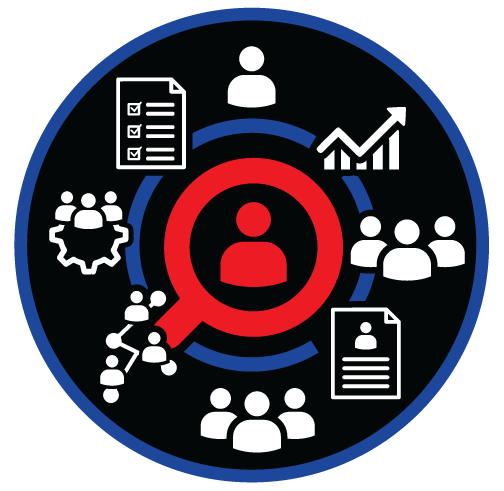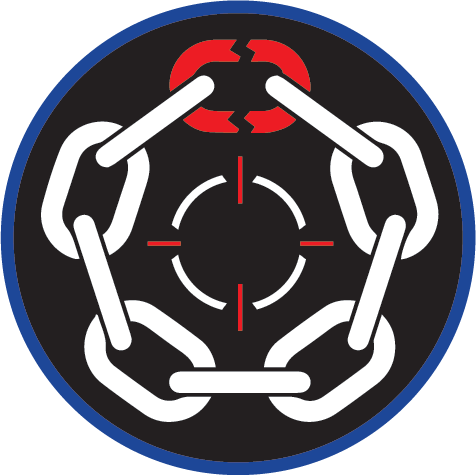
SwaggerHub Discovery
ThreatNG's Discovery of SwaggerHub Instances Enhances API Security Posture
ThreatNG's capability to discover all organization-related SwaggerHub instances is a significant capability for external attack surface management and digital risk protection. SwaggerHub is a platform widely used for designing, building, and documenting APIs, containing valuable information about an organization's API infrastructure. For security professionals, this capability is crucial because it provides a centralized view of API documentation, enabling them to understand API functionality, identify potential vulnerabilities, and assess the organization's overall security posture.

API Security Amplified: SwaggerHub Discovery for Holistic Risk Management
Enhanced API Attack Surface Visibility
By discovering SwaggerHub instances, ThreatNG significantly improves an organization's visibility of its API attack surface. This is critical across all domains because APIs are increasingly used for data exchange and functionality, and any vulnerability in an API can have widespread consequences.
Improved Vulnerability Management and Threat Detection
Discovering SwaggerHub instances enables more effective vulnerability management and threat detection related to APIs. SwaggerHub often contains detailed information about API structure and functionality, which can be used to identify potential weaknesses and attack vectors.
Streamlined Security Governance and Compliance
ThreatNG's SwaggerHub discovery streamlines security governance and compliance efforts by providing a centralized inventory of API documentation, facilitating seamless management of API assets.
Securing the API Ecosystem Across Key Security Functions
APIs are a critical component of modern applications, but they also introduce significant security risks if not properly managed and secured. ThreatNG's SwaggerHub discovery capability provides valuable insights that enhance API security across various use cases. The following sections outline the benefits of this capability for External Attack Surface Management (EASM), Digital Risk Protection (DRP), Brand Protection, Due Diligence, and Third-Party Risk Management (TPRM), illustrating how ThreatNG enables organizations to understand better, secure, and manage their API ecosystem.
Comprehensive API Inventory: ThreatNG's ability to discover SwaggerHub instances allows for a more complete inventory of an organization's external-facing APIs. This is crucial for EASM as it ensures that security teams are aware of all potential entry points and can effectively monitor and manage them.
Proactive Vulnerability Identification: By identifying SwaggerHub instances, ThreatNG facilitates the proactive identification of API vulnerabilities. SwaggerHub often contains detailed API specifications, which security teams can use to analyze API structure, authentication mechanisms, and data handling, enabling them to discover potential weaknesses before attackers exploit them.
Improved Risk Prioritization: ThreatNG's discovery of SwaggerHub data facilitates more effective risk prioritization. The platform can correlate information from SwaggerHub with other external attack surface data to assess the potential impact of API vulnerabilities, allowing security teams to focus on the most critical risks first.
Prevention of API Abuse: ThreatNG's SwaggerHub discovery helps prevent API abuse by providing insights into how APIs are intended to be used. This knowledge enables security teams to detect and block malicious or unauthorized API activity that could lead to service disruptions and other negative consequences.
Identification of APIs Handling Sensitive Data: ThreatNG's SwaggerHub discovery helps identify APIs that handle sensitive data. This enables security teams to prioritize monitoring and security measures around these critical APIs, thereby reducing the risk of incidents.
Understanding API Functionality for Threat Modeling: SwaggerHub discovery provides information on API endpoints and parameters, enabling security teams to comprehend API functionality and identify potential attack vectors. This knowledge can inform security strategies and enhance defenses against attacks targeting application programming interfaces (APIs).
Brand Protection
Reduction of Service Disruptions: ThreatNG's ability to discover and secure APIs through SwaggerHub analysis helps reduce the risk of service disruptions. By identifying and addressing API vulnerabilities, the platform minimizes the likelihood of attacks that could disrupt API functionality and negatively impact user experience.
Prevention of Data Breaches Affecting Reputation: ThreatNG's SwaggerHub discovery helps prevent data breaches that could damage an organization's reputation. Securing APIs and preventing unauthorized access to sensitive data protects the organization from negative publicity and loss of customer trust.
Protection Against Brand Impersonation: ThreatNG can use information from SwaggerHub to detect and prevent brand impersonation through APIs. The platform can identify unauthorized APIs that mimic legitimate ones, helping to protect the organization's brand and customers from fraud.
Cloud and SaaS Exposure
Enhanced Visibility of Cloud-Based APIs: ThreatNG improves visibility into an organization's cloud APIs (e.g., AWS, Azure, GCP) by discovering SwaggerHub instances. This discovery helps security teams assess the attack surface of cloud APIs and identify potential misconfigurations or vulnerabilities.
Improved Security of SaaS Integrations: SwaggerHub discovery enhances the security of integrations with Software-as-a-Service (SaaS) applications by revealing the functions of exposed APIs. This insight allows security teams to evaluate the security of data exchanged and identify potential risks in SaaS integrations.
Proactive Identification of Shadow APIs: The discovery capabilities combined with SwaggerHub functionality aid in the proactive identification of "shadow APIs"—those deployed in the cloud or connected to SaaS applications without proper security oversight. By locating SwaggerHub documentation, security teams can manage these APIs and implement appropriate security controls, thereby minimizing the risk of unauthorized access or data breaches.
Due Diligence
Assessment of Security Posture: ThreatNG's SwaggerHub discovery provides valuable insights into the security posture of a target company's APIs. This information is crucial for assessing potential risks and liabilities associated with mergers, acquisitions, or partnerships.
Identification of Integration Risks: By analyzing SwaggerHub specifications, ThreatNG helps identify potential integration risks. This includes assessing the compatibility and security of APIs that would need to be integrated, as well as identifying any potential data sharing or security vulnerabilities.
Evaluation of Compliance: ThreatNG's SwaggerHub discovery can help assess a target company's API compliance with relevant security standards and regulations. This ensures that the acquiring company is aware of any potential compliance gaps or liabilities that may arise.
Third-Party Risk Management
Vendor API Security Assessment: ThreatNG's SwaggerHub discovery facilitates a comprehensive assessment of vendor API security. This is critical for TPRM, as vulnerabilities in vendor APIs can introduce significant risks to the organization.
Monitoring of Vendor API Changes: ThreatNG can monitor vendor SwaggerHub instances for changes to their APIs. This helps organizations stay informed about any updates that might impact security or require adjustments to integrations.
Enforcement of API Security Policies: By using SwaggerHub data, ThreatNG can help enforce API security policies across third-party integrations. This ensures that vendor APIs adhere to the organization's security standards and reduces the risk of security incidents.


















